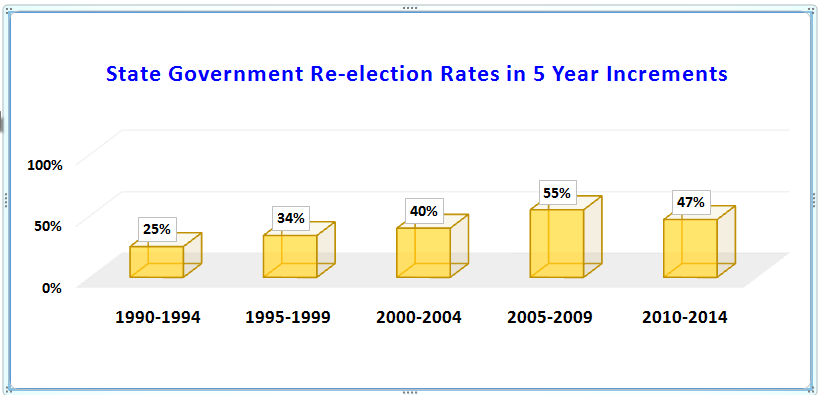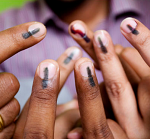Discussions about India’s state elections must necessarily include a reference to the all-powerful “anti-incumbency factor.” This is a reference to the belief that since the Congress Party lost its dominance atop Indian politics in the 1970’s, Indian voters have rarely rewarded state governments with consecutive terms. The stability of state governments is a crucial consideration as the debate heats up over devolving more powers to states.
Greater devolution could allow states to initiate reforms on their own and experiment with new policies. But it is difficult to make the case of states serving as test tubes for reform until we actually see more state governments use their existing powers responsibly. Higher re-election rates could very well have a positive impact on governance–allowing state governments to look beyond a single term when developing policy priorities.
Remarkably low re-election percentages in the past meant that state governments could not expect that they would be in power for a second term. During one particularly low point, in 1990 and 1991 India had a total of seventeen state elections. In these seventeen elections, only three incumbent governments won re-election. In this environment, policymaking focused on programmes that would result in tangible near-term gains to voters, the quick enrichment of political leaders, or both. Projects which had long gestation periods were not prioritised.

State government terms are five years (except Jammu & Kashmir, which has a six year term), so it is helpful to look at their electoral fortunes in five year increments. In the period from 1990-1994 state governments had a re-election rate of only 25 %. In the most recent five year period from 2010-2014, state governments had a much higher re-election rate at 47 %, though this declined a bit from the 2005-2009 period. As a comparison, a report by Rutgers University’s “Center on the American Governor” shows that state governors in the U.S. have enjoyed a 78.22% re-election rate from 1980-2013[1]. While no elected official can ignore the attraction of looking for short-term political gains, higher re-election rates allow U.S. governors some flexibility to balance short-term interests with planning for longer-term growth.
The BJP’s electoral surge has brought down the re-election rates of regional parties (Maharashtra to name one) in the most recent period. Looking back to the end of 2005, Congress held fifteen states to the BJP’s six. Today Congress holds nine states to the BJP’s eight. Still, over the course of the last twenty-five years, the trend-line shows a much greater proclivity towards stable governance, especially so in the cases of Gujarat, Madhya Pradesh and Chhattisgarh, which have seen the incumbent BJP-led government get reelected twice.
Of course, not every state has seen increasing stability. In particular a number of states have not seen a government win re-election in decades including Tamil Nadu (last incumbent to win was in 1984), Goa (1994), Kerala (1982), Himachal Pradesh (1985), and Uttar Pradesh (1985). However, fourteen states[2] currently have governments in (at least) their second terms.
However, if this trend of higher re-election rates continues, or at least stabilises, more state governments may become more willing to focus policymaking on reforms with longer gestation periods like utilities and other infrastructure projects. Only then could states truly become the laboratories for reform.
Richard M. Rossow holds the Wadhwani Chair in U.S. India Policy Studies at the The Center for Strategic & International Studies (CSIS), Washington, DC. You can tweet to him at @richardrossow.
This article was exclusively written for Gateway House: Indian Council on Global Relations. You can read more exclusive content here.
For interview requests with the author, or for permission to republish, please contact outreach@gatewayhouse.in.
© Copyright 2015 Gateway House: Indian Council on Global Relations. All rights reserved. Any unauthorized copying or reproduction is strictly prohibited
References
[1] McDowell, Colin, ‘When Governors Seek Re-Election’, Center on the American Governor and Rutgers University, <http://bit.ly/174AcLp>


